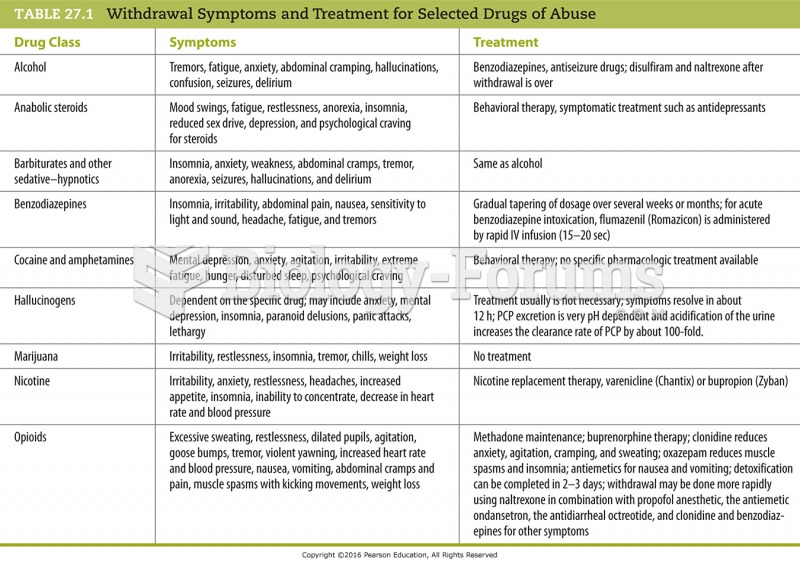Answer to Question 1
Correct Answer: 1
Rationale 1: Sibutramine (Meridia) is the most widely prescribed appetite suppressant for the short-term control of obesity. Common side effects include headache, dry mouth, and insomnia. It should be used with great care in clients with cardiac disorders, and it can cause tachycardia and hypertension.
Rationale 2: Diabetes mellitus is incorrect. This medication should be used with caution in clients with cardiac disorders.
Rationale 3: Asthma is incorrect. This medication should be used with caution in clients with cardiac disorders.
Rationale 4: Hypotension is incorrect. This medication should be used with caution in clients with cardiac disorders.
Global Rationale: Sibutramine (Meridia) is the most widely prescribed appetite suppressant for the short-term control of obesity. Common side effects include headache, dry mouth, and insomnia. It should be used with great care in clients with cardiac disorders, and it can cause tachycardia and hypertension. Diabetes mellitus is incorrect. This medication should be used with caution in clients with cardiac disorders. Asthma is incorrect. This medication should be used with caution in clients with cardiac disorders. Hypotension is incorrect. This medication should be used with caution in clients with cardiac disorders.
Answer to Question 2
Correct Answer: 2
Rationale 1: A client who has a gastrostomy tube, if well maintained, should not be at risk for fluid loss.
Rationale 2: Diarrhea is a symptom, not a disease, of an underlying problem. It can be caused by medications, infections, chemicals, or inflammatory disorders. When prolonged or severe, especially in children, diarrhea can result in significant loss of body fluids that leads to acidbase or electrolyte disorders.
Rationale 3: Constipation would not cause acidbase imbalances.
Rationale 4: A 24-hour history of nausea and vomiting, especially in a young adult, would not be a significant risk for the client.
Global Rationale: Diarrhea is a symptom, not a disease, of an underlying problem. It can be caused by medications, infections, chemicals, or inflammatory disorders. When prolonged or severe, especially in children, diarrhea can result in significant loss of body fluids that leads to acidbase or electrolyte disorders. A client who has a gastrostomy tube, if well maintained, should not be at risk for fluid loss. Constipation would not cause acidbase imbalances. A 24-hour history of nausea and vomiting, especially in a young adult, would not be a significant risk for the client.







